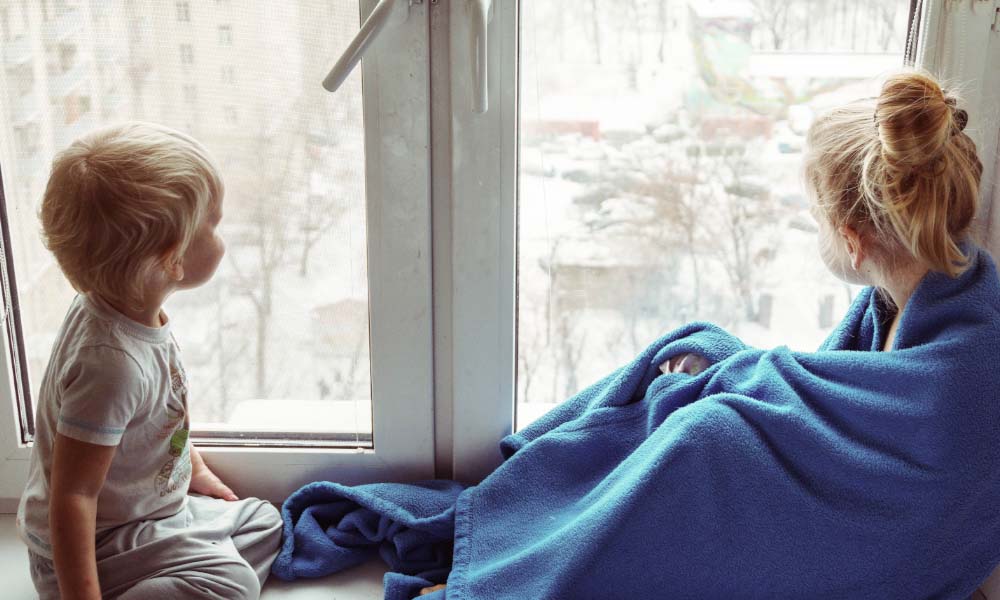Only a few days after my daughter was born, I propped up my laptop on the couch and started answering work emails. It was April 2020—the Covid-19 pandemic was fresh and scary, and the world felt full of unknowns. My new baby needed me at all hours of the day and night, and I was recovering physically and emotionally from a scary emergency c-section. I didn’t know how to take care of a new baby or manage lockdown life, but I certainly knew how to write articles and press releases. Work felt familiar, a sort of solace in this wild new world.
These days, I’m preparing for a different kind of maternity leave. I have a toddler, and I quickly learned that while it’s possible to angle my laptop just so to Zoom while breastfeeding or put a baby on a comfy blanket for some tummy time and answer a flurry of emails, my toddler needs attention pretty much constantly (unless I want to find her climbing on our coffee table or gleefully emptying her crayons into the toilet.)
I’m a freelance writer and editor, and planning to take time off requires creativity and major roadblocks. Unlike full-time employees, self-employed workers aren’t eligible for parental leave under the Family and Medical Leave Act. In other words, if I don’t work, I don’t get paid. I’m not alone: an estimated 59 million Americans, or about 36% of the country's workforce, did freelance work in 2020.
My husband, who has a more traditional full-time job, had a great leave with our first, but he now has a new employer that offers just one week off for the non-birthing parent. He’s saving a bunch of his vacation days, and we’re recruiting my parents, who live close by, to help as much as they can. (Thanks, mom and dad!).
We are enormously lucky, yet I know the postpartum stretch won’t be easy. New babies require an almost unthinkable amount of time and attention—not to mention sleep deprivation. Here are five practical steps freelancers can take to prepare for taking an actual maternity/paternity leave, from financial to emotional. I’ll be taking them to heart.
1. Do your research
Legal editor, reporter, and toddler mom Stephanie Russell-Kraft says, “I bought myself a disability insurance plan, so I'd have some paid time off,” which is available to freelancers in New York state. Some insurance companies offer short-term disability plans that cover 12 to 16-weeks of parental leave, and a handful of states provide paid family leave for self-employed workers. But both usually require serious advanced preparation—you must enroll before getting pregnant, in some cases, even years before. If you’re the type who likes a plan, it’s absolutely worth investigating your options.
2. Save, save, save
Writer and mom of two Kimberly Rae Miller says, “I saved as much as I could before each child, which is harder for the second than the first because so much disposable income went to childcare.” Like all saving, time has huge value. If you can start before pregnancy by skimming a bit from each month’s earnings, you’ll be in excellent shape.
A quick geode to your savings goal: determine how much you need to make each month to pay your bills after saving a third for taxes, then multiply that by the number of months of leave you’re planning. Other freelancers I spoke with took on extra work before the baby came, setting aside their pay.
3. Outsource
“My main move was to hire a really fabulous second in command,” explained Emily P. Goodstein, the founder of digital marketing and fundraising firm Greater Good Strategy who has a one-year-old daughter. Mom of two Erica Nonni, who owns her own small communications and PR company, seconded this advice: “Hire a great assistant if you can, and perhaps for more time than you think you'll need.” If you don’t have the finances to afford an assistant, perhaps a colleague can lend a hand—you’ll get good karma for passing along work, and you won’t leave your clients in a bind if last-minute needs pop up.
If you’re a solopreneur contemplating hiring some outside help, now might be the perfect time. As a writer with my byline on most of my work, I don’t have the luxury of outsourcing much. But I have recruited an assistant to help with some editing and administrative duties, and it’s a giant relief to have someone I trust in my corner. If you have friends who will, say, cook you an extra dinner on Tuesdays or walk your dog, take them up on any and all offers.
4. Communicate with your clients
The more you keep them in the loop, the more you can work together to find an arrangement that is beneficial to all. You might offer creating a calendar or taking care of tasks ahead of time—great for them and helpful for you, since you can save the additional income.
Craft your parental leave email and set it up for a certain date. I know I’m not alone in the fear that if I say no to work, the well will instantly dry up. But the reputation and relationships you’ve built over the years won’t evaporate in a puff of smoke if and when you take some time for you and your growing family. Promise!
5. Allow for flexibility
Every family, baby, and situation is different. For Miller, “The first child just felt so overwhelming to me, I put my entire identity on hold to figure out how to be a mom.” But when her second baby arrived, “there was something about the second kid that to me just felt easier. I’d already done the adjustment and knew how to work and mom.” Although she found hustling for new work hard, she “went back to writing four weeks after my second was born, and relied much more on old contacts.”
As for me, I surprised myself by wanting to jump into work so soon after my first was born. I’m planning and hoping to take more of a proper leave this time around, but I’m also leaving room for other possibilities.
Like all parents, freelancers must prepare for the unexpected. I’m excited for this journey ahead. I’m learning both as a writer and as a mom that things are a whole lot easier when I don’t expect them to be perfect, and when I allow for the messiness (and joy!) that the ride inevitably brings.



